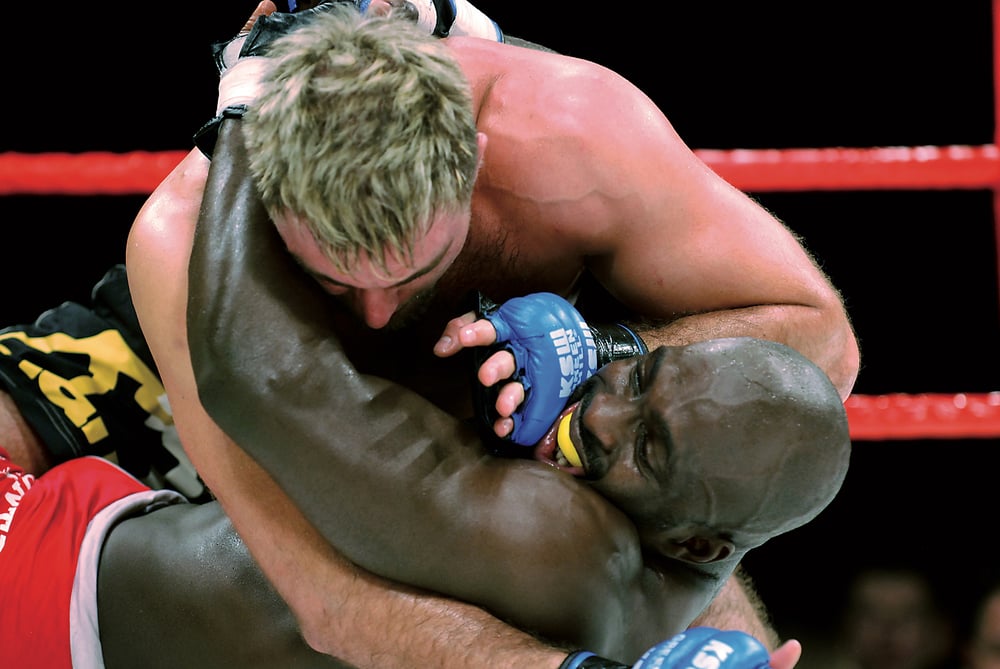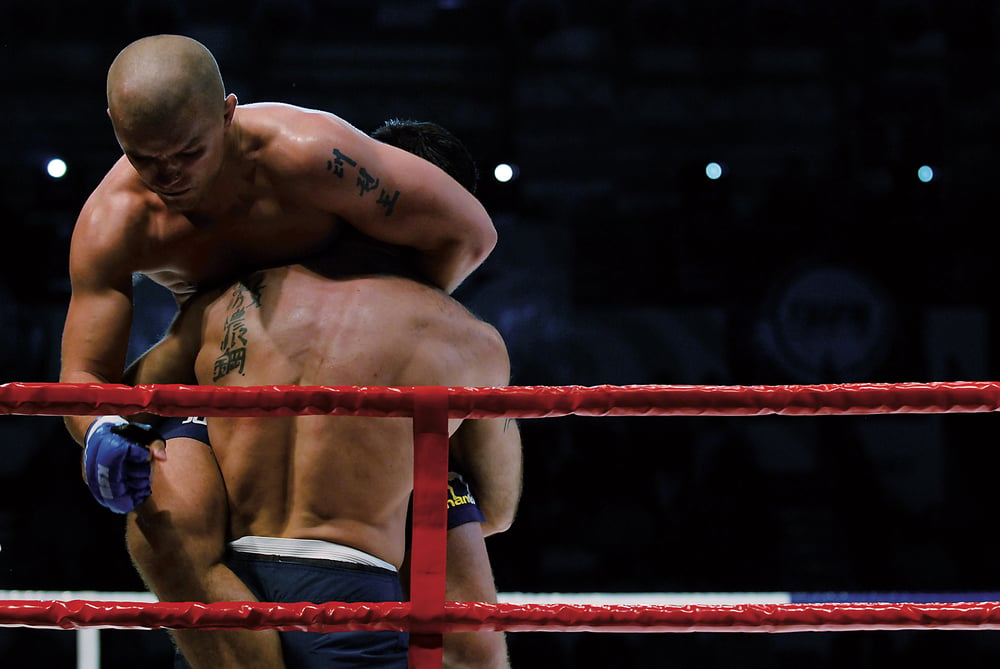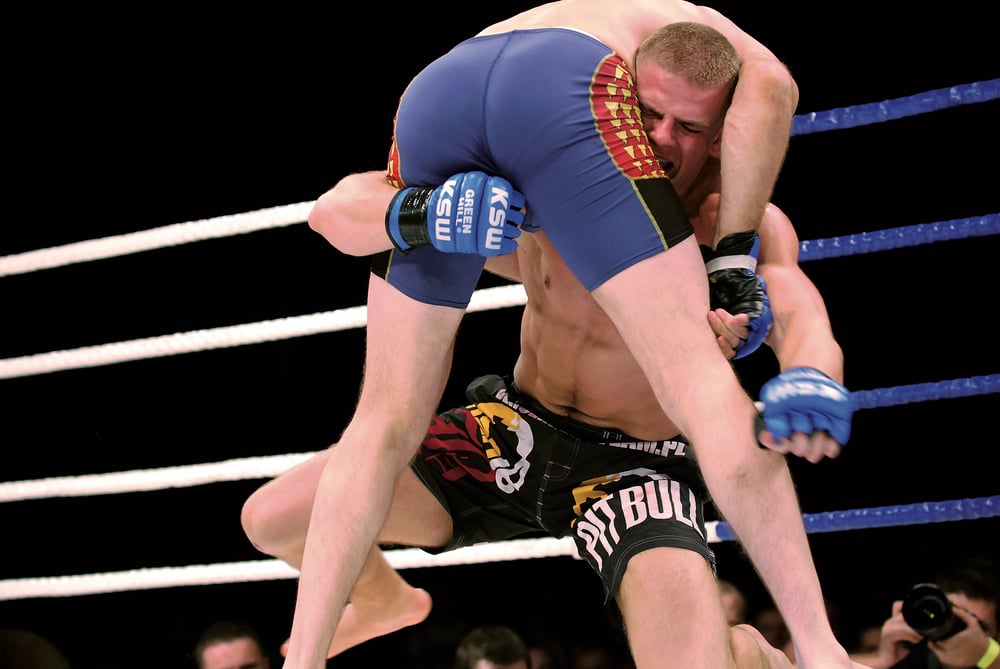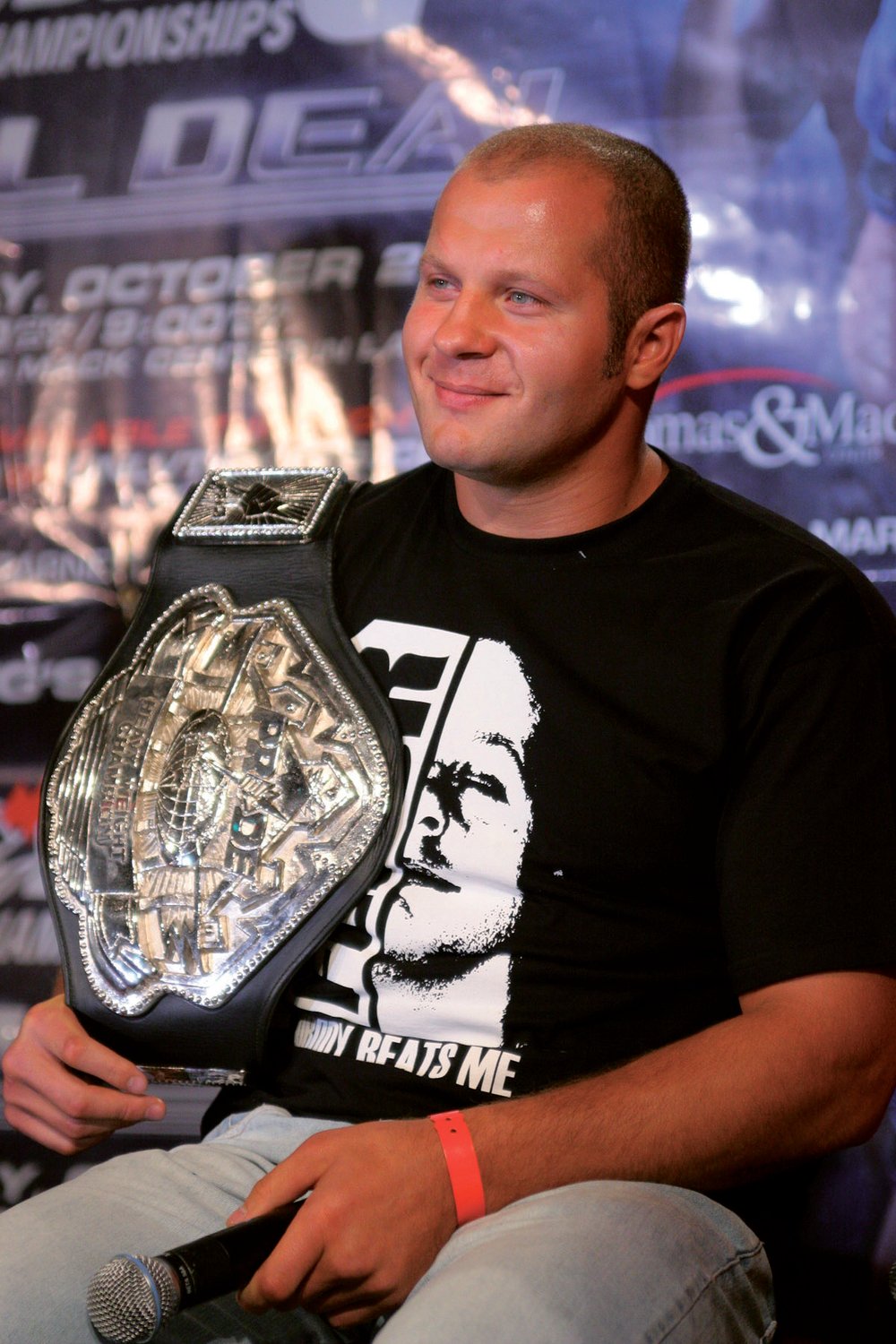
Issue 033
January 2008
Sixteen years have passed since 1991, the year that marked the collapse of the USSR and the end of communism in Eastern Europe. As the once mighty ‘Evil Empire’ disintegrated, thousands of young Soviet Judo, boxing and Sambo practitioners struggled to survive in a world of political instability and poverty.
Unsurprisingly, when an unusual American event called the Ultimate Fighting Championship captured the attention of the West, the majority of Eastern Europeans were simply too hungry, poor or suffering from a combination of both to care. It would be a few years before “ultimate fighting” made it’s way to the Eastern Block and revive the region’s once proud martial arts heritage.
Fast forward to the modern day. With ‘New Europe’ stabilised and Russia booming, MMA has truly taken off in the former Second World. Russia, Poland, Belarus, Latvia, Lithuania and even the most obscure “I’ve-never-heard-of-it” republics are getting into the game. Not all of these nations have strong homegrown MMA organisations, but nonetheless training facilities and talent are plentiful. In this article we take you on an MMA tour of the former Second World, starting with its former Western frontier, Poland.

Poland
Once considered a window to Eastern Europe, it seems that this country wasn’t just destined to be the proud exporter of plumbers and construction workers, but also fighters. Earlier this year both Cage Rage and the UFC featured their first Polish competitors in Jack Toczydlowski (1-0-0) and Tomasz Drwal (14-2-0). Toczydlowki, who trains with the London Shootfighters, had his first pro bout at Cage Rage 20, where he stopped Jason ‘Badass’ Barrett (3-4-0), while Drwal, a man considered to be one of Europe’s brightest prospects, lost to Thiago Silva (11-0-0) at UFC 75. Both of these young men represent just the tip of the iceberg according to Drwal, who trains with Polish MMA and Judo icon Pawel Nastula (1-3-0), the first Pole to compete in Pride FC.
“Poland is full of promising young fighters,” says Drwal. “The training facilities are good and so is the Polish work ethic. The problem is that pro level, home-grown MMA organisations have just begun to emerge, so it’s very difficult for Polish fighters to get noticed. Hopefully things will change in time.”

A lack of local promotions doesn’t seem to stop the cream of the crop from rising, as more and more talented Poles are building their careers internationally, often driving hundreds of miles to Germany, Holland or anywhere else where they can compete.
“I think fighting is part of a Pole’s nature,” says Drwal. “The country is full of guys who just want to compete, and are willing to do anything for the opportunity. I myself have driven all night to an event, gotten there in the morning, slept a couple of hours in the car before fighting, then hopped back in the car and drove home.”
With a large talent pool, including a number of world class Brazilian Jiu-Jitsu, Judo and boxing practitioners, Poland may one day become a big player in international MMA. Although Polish fighters are plagued by a serious lack of pro level MMA events within their country, just next door is Lithuania, where it’s a whole different story.

Lithuania and the Baltic States
With the death of Pride, a plethora of Japanese organizations are jumping in to fill the void and this is excellent news for Lithuania, a country that has branches of K-1 HERO’s, ZST and Shooto operating within it’s territory.
Once a year the scenic city of Vilnius hosts a K-1 HERO’s event, which is the ultimate opportunity for Lithuanian talent to gain access to Japan. We’ve already seen some of that talent in Remigijus Morkevicius (16-5-0), a man who is arguably one of the hardest pound-for-pound strikers in MMA.
Morkevicius was a wild child growing up. Before discovering martial arts, the Lithuanian would spend his days outdoors doing crazy things like jumping off two storey buildings. He soon found an outlet for his energy in kickboxing, and later mixed martial arts. With 13 of his 16 professional victories coming via knockout, he’s not only a great fighter, but an entertainer as well. Unfortunately, the 25-year-old has been suffering from a chronic back injury and has not been active for over a year, during which time other promising young Lithuanians have stepped into his shoes.
One of these young men is Marius Zaromskis (6-1-0). The impressive striker stormed his way through Cage Rage Contenders before capturing the attention of British MMA fans following an incredible three round war with Frenchman Damien Riccio (8-13-0) at Cage Rage 20. One of the first to realize Zaromskis’ potential was Cage Rage commentator Stephen Quadros.
“Zaromskis’ striking is amazing,” says Quadros. “It’s a very hard karate influenced style, very typical of his region. We haven’t seen much of his ground game yet, but he’s now training at London Shootfighters so it’s got to be up to par.”
While Japan may have lost their Lithuanian golden boy in Morkevicius, very soon the trickle of Baltic fighters in Japanese, and perhaps Western promotions, will turn into a flood. As Lithuanian MMA organizations continue expanding into neighbouring Latvia and Estonia, fans shouldn’t be surprised to see new Baltic faces in K-1 HERO’s.

Former Yugoslavia and the Balkans
If there were a Balkan map of MMA, one country would stand out like an oasis in a vast desert. With a population of just under five million, the tiny nation of Croatia has become a stronghold for the sport. This stems back from Croatia’s kickboxing background, which has produced several KO artists. Of course everyone knows about MMA superstar Mirko ‘Cro Cop’ Filipovic (22-6-2), however the name Zelg ‘Benkei’ Galesic (7-3-0) has also started circulating among fans.
Once called ‘Little Mirko’, Galesic is no longer in the shadow of the former Pride open weight champion, although he does train with him from time to time. Galesic (nicknamed Benkei after a legendary Japanese warrior-monk) was labelled a hot prospect after becoming the Cage Rage British middleweight champion in 2006, at which time his manager and trainer Charles Joseph entered negotiations with top international promotions, including the UFC.
“We had trouble negotiating with the UFC, so we didn’t sign with them,” says Joseph. “There was also something drawing us to Japan, so Pride seemed to be the logical choice. Unfortunately when they were bought out the situation became very complicated. Thank God everything sorted itself out in the end.”
Currently fighting for K-1 Hero’s, Galesic has become quite a draw in Japan. While his record in the land of the rising sun is 1-2 (due mostly to underdeveloped ground skills, tough he does hold submission victories) the Croatian brings huge doses of excitement into the ring, with his pinpoint accurate strikes and endless energy. However, he’s not the only former Yugoslavian fighter to keep an eye out for. Galesic’s camp, The Trojan Freefighters, has become a haven for his fellow countrymen. Judo stylist Maro Perak (8-0-0) and kickboxer Domogoj Ostojic (1-1-0) have been getting attention from hardcore MMA fans, and while it’s too early to tell whether or not they’ll rise to the big leagues, there’s definitely potential.
Another standout in this region is Bulgarian Jordan Radev (11-2-0). In a country where MMA is practically non-existent, this Olympic level wrestler made it all the way to the biggest promotion in the world. While he didn’t get off to the greatest UFC debut, losing to Drew McFedries (6-2-0) by way of KO at just 33 seconds of the first round, he is set for a comeback at UFC 79 where he will take on submissions specialist Dean Lister (9-5-0). Radev, is currently training in Amsterdam’s Sportcentrum KOPS, home of K1 legend Peter Aerts.

Greater Russia
The term Greater Russia is often used to describe not only the world’s largest country, but also the surrounding nations such as Georgia and Belarus, many of which have recently gained independence. In MMA terms, these nations have something very important in common, besides their love of vodka. These countries are essentially the home of Sambo, a form of wrestling that has single-handedly been responsible for the Russian MMA revolution.
Taught in schools, the police force and the military, Sambo essentially created top heavyweights such as Fedor Emelianenko (26-1-0), Andrei Arlovski (11-5-0) and Cage Rage British heavyweight champion Tengiz Tedoradze (22-7-1). ‘Combat Sambo’ competitions, where contestants fight under modified MMA rules, are considered a gateway to full MMA, and with Emelianenko as the face of Sambo, a whole generation of future athletes are finding themselves drawn to the sport.
“Long before MMA came to Russia, we had Combat Sambo,” says Stanislaw Khramov, a manager and trainer at the infamous Red Devil Sports Club (home of top Russian fighters including Emelianenko). “State sponsored competitions began in the 1940’s and they were the closest thing to MMA, anywhere in the world.”
Cage Rage’s Tengiz Tedoradze, a world-class wrestler and Sambo practitioner himself, is a living testament to the effectiveness of the martial art. In a country where good wrestling skills are more effective than kryptonite, the Georgian has absolutely dominated the Cage Rage heavyweight division using nothing more than takedowns, ground and pound and superior control.
“In my early MMA career I relied solely on those skills,” says Tedoradze through his manager and translator Paul Murphy. “Nowadays I am improving in other areas, but it’s difficult to teach an old dog new tricks.”
Unlike the majority of its neighbours, Russia is in the process of creating a self-sustaining MMA market. Recently M-1 Mixfight, Russia’s top MMA promotion, was acquired by New York’s Sibling Entertainment Group, and renamed M-1 Global. Now with long time MMA promoter and agent Monte Cox at it’s helm, the new organisation will be putting on shows in Russia, America and Asia, starting what may very well be a bright new future for the sport we all love.

Fighters To Look Out For…
Zelg Galesic
Although this Croatian Sensation had a rough start in Japan, there are very few in K-1 HERO’s who could match his striking skills. With improved takedown and submission defence, Galesic could become a real force to be reckoned with.
Remigijus Morkevicius
Electrifying and entertaining, Morkevicius is true champion material. The problem is that he’s been inactive for so long due to injuries. Retirement rumours have unfortunately begun to circulate.
Tomasz Drwal
The UFC’s first Polish competitor has youth and talent on his side. All that remains now is for the 25-year-old student, lifeguard and skiing instructor to expand his training camp and put aside his other interest to focus on fighting.
Marius Zaromskis
He’s definitely a breath of fresh air, however Zaromskis is still largely unproven. Of course the potential is there, but until the Lithuanian faces higher quality opponents we can only speculate.
Jordan Radev
Very few mixed martial artists have his level of wrestling skills. The fact that he’s training with potentially the greatest kickboxer of all time will undoubtedly improve his stand up very quickly as well. Expect to be impressed at UFC 79.
Mamed Khalidov
This Chechnyan light heavyweight is currently based in Poland where he fights for the nation’s top promotion KSW. With a well-rounded skill set including impressive leglocks, Khalidov seems to improve exponentially each fight.










